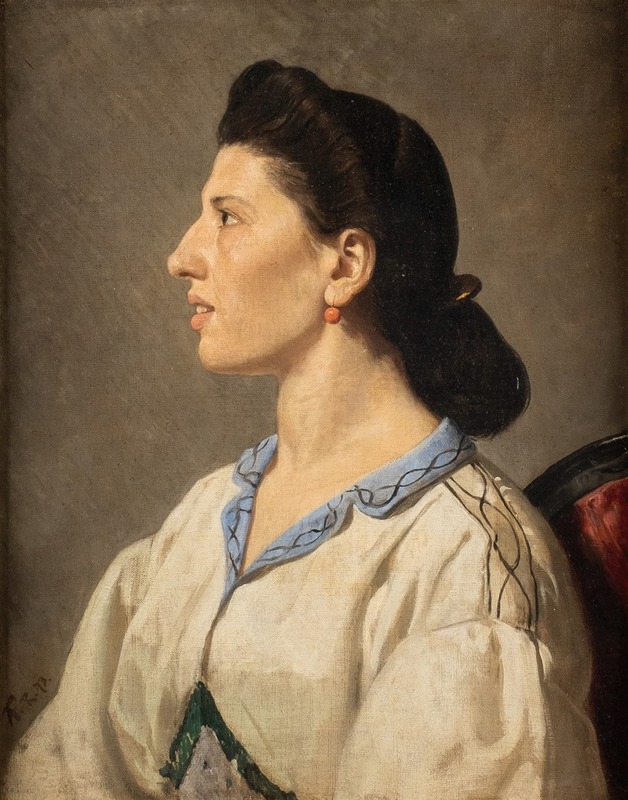
Portrait of an Italian woman
A hand-painted replica of Anselm Feuerbach’s masterpiece Portrait of an Italian woman, meticulously crafted by professional artists to capture the true essence of the original. Each piece is created with museum-quality canvas and rare mineral pigments, carefully painted by experienced artists with delicate brushstrokes and rich, layered colors to perfectly recreate the texture of the original artwork. Unlike machine-printed reproductions, this hand-painted version brings the painting to life, infused with the artist’s emotions and skill in every stroke. Whether for personal collection or home decoration, it instantly elevates the artistic atmosphere of any space.
Anselm Feuerbach's "Portrait of an Italian Woman" is a notable work by the German painter, who was one of the leading figures of the 19th-century German art scene. Feuerbach, born in 1829 in Speyer, Germany, was known for his classical style and his focus on historical and mythological subjects. His works often reflect a deep admiration for the Italian Renaissance, which significantly influenced his artistic approach.
"Portrait of an Italian Woman" is a testament to Feuerbach's skill in capturing the essence and character of his subjects. The painting is believed to have been created during the period when Feuerbach was living in Italy, a time that was crucial for his artistic development. Italy, with its rich cultural heritage and artistic history, provided Feuerbach with endless inspiration, and he spent a significant portion of his career there, particularly in cities like Venice, Florence, and Rome.
The portrait features a woman whose identity remains unknown, a common occurrence in many of Feuerbach's works. This anonymity adds a layer of universality to the painting, allowing viewers to focus on the aesthetic and emotional qualities of the piece rather than the personal history of the subject. Feuerbach's use of color, light, and composition in this portrait exemplifies his mastery of the classical style, characterized by its clarity, harmony, and balance.
Feuerbach's technique in "Portrait of an Italian Woman" is marked by a meticulous attention to detail and a subtle use of color to convey mood and emotion. The woman's expression is serene yet introspective, inviting viewers to ponder her thoughts and feelings. The background is typically understated, ensuring that the focus remains on the subject's face and expression. This approach is consistent with Feuerbach's broader artistic philosophy, which emphasized the importance of the human figure and the expression of inner life.
The painting reflects Feuerbach's interest in the idealized beauty and dignity of his subjects, a theme that runs throughout much of his work. His portraits often convey a sense of timelessness, drawing on classical ideals to create images that transcend the specificities of time and place. This is evident in "Portrait of an Italian Woman," where the subject's calm demeanor and poised posture evoke a sense of classical grace and elegance.
Feuerbach's work, including "Portrait of an Italian Woman," was highly regarded during his lifetime, and he was considered one of the foremost painters of his generation. However, his reputation waned somewhat after his death in 1880, as tastes in art shifted towards Impressionism and other modern movements. In recent years, there has been a renewed interest in his work, as art historians and collectors have come to appreciate the technical skill and emotional depth of his paintings.
Today, "Portrait of an Italian Woman" is appreciated not only for its aesthetic qualities but also as a representation of Feuerbach's broader artistic legacy. It serves as a reminder of the enduring appeal of classical art and the ways in which artists like Feuerbach sought to capture the beauty and complexity of the human experience. The painting remains an important part of the study of 19th-century art, offering insights into the cultural and artistic milieu of the time.


















